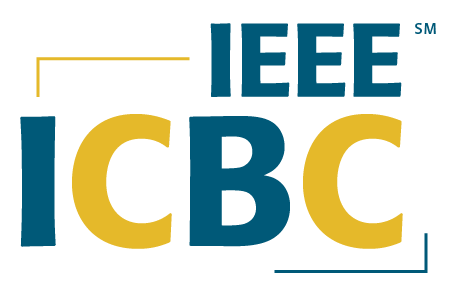Tutorial 4. Interledger: theory and practice
Santeri Paavolainen and Pekka Nikander (Aalto University, Finland)
Abstract
With the spread of pragmatic approaches to blockchains and distributed ledger technologies (DLTs), the need to operate securely across multiple DLTs has become apparent. The class of operations that span two or more DLTs is generally referred to as interledger. Various interledger approaches have been proposed, researched and taken into use, including for example, atomic cross-chain transactions, sidechains, bridging approaches, ledger-of-ledger structures, and layered value transfer protocols, such as the W3C Interledger Protocol (ILP).
In this tutorial, we first provide a cohesive backdrop for understanding the motives behind interledger approaches, such as crossing across global DLTs or more locally bridging ledgers more suited for IoT integration with a public ledger. After that, we outline the different types of interledger approaches and their advantages and disadvantages, and describe different use cases and examples where different interledger approaches are applicable.
Keywords: interledger, distributed ledgers, IoT, HTLA, sidechains, ILP
Description
There has been a number of proposed approaches for interledger operations. From the technical point of view, these have been categorized into atomic cross-chain transactions, sidechains, bridging approaches, ledger-of-ledger approaches, transactions across a network, and layered value transfer protocols [1]. These approaches differ in their complexity, scalability, whether they transfer or exchange value, and what security and timeliness properties they provide. This breadth of different methods may appear as intimidating to someone new to the field. Selecting a suitable approach for a particular problem may not be immediately obvious.
From the users’ point of view, there are various use cases for interledger operations, with the simplest one being the transfer or exchange of value between two ledgers. While on most DLTs — especially the public ones — their cryptocurrencies, as a value medium, play a large role, in other contexts, such as businesses and business consortia, other types of interledger operations, often without any explicit value transfer, are often more applicable. A practical example of this is bridging an IoT device to a public ledger through the use of an interledger gateway between a public DLT and a permissioned DLT. The difficulty of IoT devices interacting with public DLTs, especially regarding when limited by battery capacity, has been observed [2], [3]. In this context, the use of interledger gateway would allow the IoT device to operate on a ledger better suited for constrained devices. Here, the public ledger may be used for payments, while the permissioned ledger — less demanding on IoT device resources — provides transparency and auditability for all parties.
Thus, to provide a comprehensive understanding of interledger operations, one must address the underlying motives; the capabilities and limitations of current generation of DLTs, and how these affect the selection and properties of known interledger approaches.
The objective of this tutorial is to give an overview of the interledger technologies to people who are already familiar with the major DLT systems, such as Bitcoin, Ethereum, Hyperledger Fabric, Corda R3, etc. Basic knowledge of how at least some current DLTs (such as Ethereum or Hyperledger Fabric) operate is assumed. Furthermore, the detailed understanding of hashed time-lock agreements (HTLAs), while briefly explained, requires a
sufficient background in cryptography or further studies after this tutorial.
The tutorial is structured to first give a brief overview of all of the topics, so that all attendees will be able to gain some insight into the field of interledger operations.
The detailed content and timeline of this tutorial is described below in Sections Content and Schedule, respectively.
Content and schedule
The tutorial length is 1½ hours, and covers the following topics (with approximate duration of different parts):
- Brief overview of DLTs, smart contracts and cryptographic primitives used (20m)
- Motives for interledger approaches: economic, performance, and others (20m)
a. Why existing DLTs are unable to meet all requirements?
b. Why are people using multiple value-based DLTs at the same time? - Interledger operations (40m)
a. Introduction to the topic using a toy problem
b. Different interledger approaches and their differences
c. Use cases and applicability of interledger approaches to them
d. Security guarantees and risks with different interledger approaches - Wrap-up (10 min)
This tutorial has not been previously held nor has it been offered to other conferences.
Biographies
Santeri Paavolainen is a PhD student at Aalto University, School of Electrical Engineering, Department of Communications and Networking. Before starting his PhD studies in 2017, he worked for over two decades in the field of software engineering and business in various roles from a developer and a consultant to CTO of several companies. His work spans from low-level embedded FPGA programming up to designing web service systems used by
over a hundred million users. He is currently working on the EU H2020 project SOFIE (Secure and Open Federation of IoT Systems). His PhD research topic is the interoperation of constrained IoT systems with distributed ledgers. He has worked previously as a technical trainer in Europe and USA, and is currently lecturing a course on microservice architectures and serverless computing at Aalto University.
Pekka Nikander is a professor of Industrial Internet at Aalto University, School of Electrical Engineering. He is the founder of Nixu, a leading computer and network security consultant company in Finland, listed at Nasdaq OMX Nordic, and a co-founder of four other startup companies. He has written some half a million lines of code, all the way from FPGAs to user interfaces, and published over 100 papers with over 8000 citations and Google H-index of 40. His current interests focus on using DLTs in the context of IoT systems and for enabling efficient data economy.
The tutorial is jointly prepared by the authors. The tutorial itself will be given by Mr. Paavolainen.
References
[1] V. A. Siris, P. Nikander, S. Voulgaris, N. Fotiou, D. Lagutin, and G. C. Polyzos,
‘Interledger Approaches’, Manuscript submitted for publication, 2019.
[2] P. Danzi, A. E. Kalor, C. Stefanovic, and P. Popovski, ‘Analysis of the Communication
Traffic for Blockchain Synchronization of IoT Devices’, in 2018 IEEE International
Conference on Communications (ICC), 2018, pp. 1–7.
[3] S. Paavolainen and P. Nikander, ‘Security and Privacy Challenges and Potential
Solutions for DLT based IoT Systems’, in 2018 Global Internet of Things Summit
(GIoTS), 2018, pp. 1–6.
| PATRONS |
 |
 |
 |
| PLATINUM | GOLD | GOLD |
 |
 |
| SILVER | SILVER |
| BRONZE | BRONZE | BRONZE |
| SUPPORTERS |


